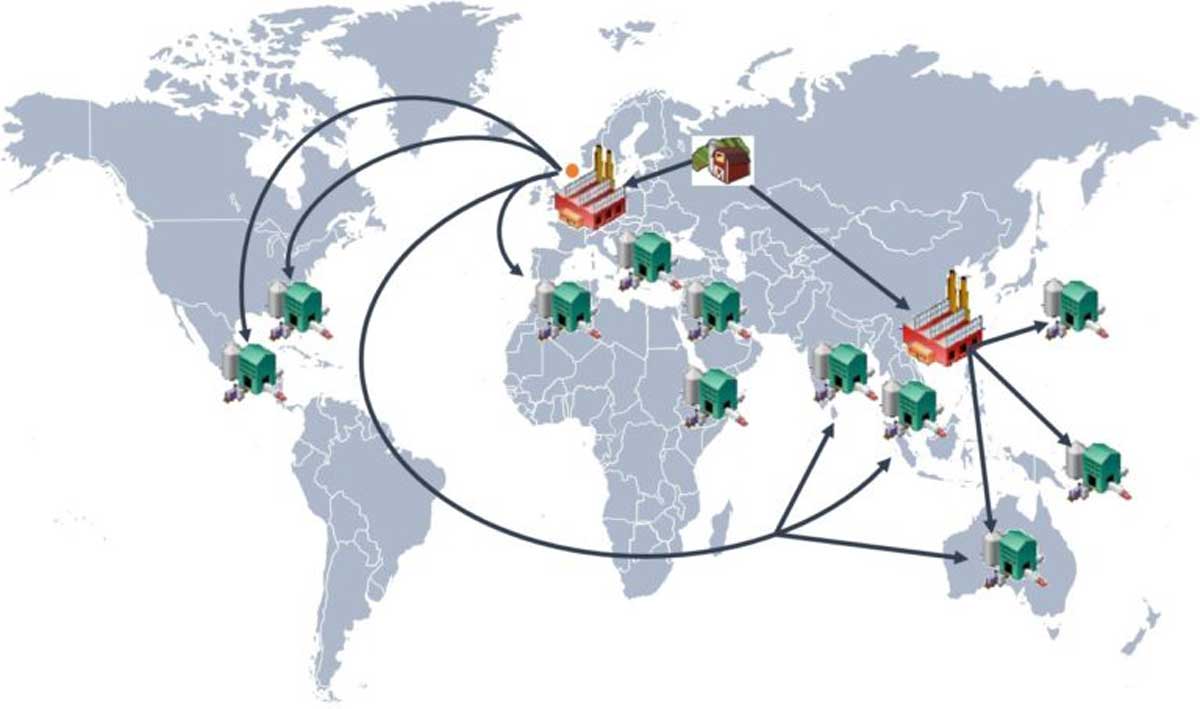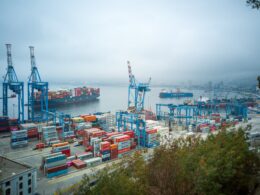In a long-lived industry like transport and logistics, we all like familiarity. Our companies have been doing things in roughly the same way for decades, and for many it’s hard to see why change has to come sooner or later. We’re used to an essentially localised, paperwork-based system of planning, booking and fulfilment, and as the old adage goes, if it ain’t broke, why fix it? The short answer is that in 2018, it may be more broken than you think.
The Amazon effect is wreaking havoc on supply chains globally. Consumers are buying online from everywhere in the world and expecting delivery in one to two days. Not only that, but they expect you to be able to tell them where their package is in the chain with an increasingly fine degree of accuracy and provide accurate delivery times – often to within an hour. That revolution in the consumer world is spilling over into B2B. Customers expect that the same technologies and processes used by Amazon should be used in their dealings with bulk shippers, giving them the same highly granular service.
[sociallocker]At the same time, international shipping is becoming ever more mainstream for smaller companies which previously wouldn’t have had the resources to build it into their business model. Logistics companies need to be able to provide effective cross-border transportation if they are to compete in a changing market. That means navigating the constantly-shifting world of customs controls and ensuring that local partners comply with the customer’s requirements and standards.
Global trade networks: a model for the future
International shipping and the arrival of the consumer-centric age present real challenges for suppliers and shippers attempting to keep up with the velocity expectations of their customers. Companies are realising they must follow a new path…one that leads away from the old manual models and towards a global trade network. Essentially, this means operating an extended system of partnerships across the world, which enables you to spin up services on-demand and streamline transport options and planning.
When comparing a traditional supply chain model with a modern global trade network model, there are some key differences that become immediately obvious. Here are the top three reasons why you might need to consider a global trade network model to help your business fulfil its potential.
Turning the supply chain into a strategic asset
In the traditional supply chain model, the supply chain is viewed as a cost centre. By contrast, a global trade network functions as a strategic, competitive asset. With the expanded capabilities offered by a linked-up global trade network, logistics companies can upgrade existing services to generate new revenue streams and bring in new customers.
Gone are the days of only planning and executing the shipment booking through the delivery process. Now the attention is directed to streamlining the entire order life cycle ranging from purchasing order management to import and export compliance in order to deliver the best customer experience.
Closer connections and real-time data
In the old model, stand-alone supply chains were focused on internal automation for cost-cutting and time-saving measures. The problem is that stand-alone supply chains still rely on partners that reside outside their system. When things change with their partners, those changes are not only impossible to see, but the effects of the change create chaos as the logistics company tries to incorporate new requirements. This chaos increases the cost to serve customers and forces partners to add inventory buffers into their supply chains.
The competitive advantage achieved through a global trade network is connecting partners using real-time data and speed to ensure everyone is on the same page. The interconnectivity removes barriers created by static, linear processes and allows a supply chain to function as a dynamic living ecosystem where each action gets an immediate reaction to streamline processes. The cost to serve decreases while customer service improves.
Insight you can use
Another advantage to the global trade network model is the amount of actionable intelligence the network can provide to help you make better business decisions. It eliminates black holes and guesswork by providing real-time data on what is happening in the supply chain. Analytics can be used to enhance optimisation opportunities so companies can look beyond micro-optimisation and expand to macro-optimisation within the network.
An opportunity and a challenge
 This is the golden age of transportation. Open borders and the rise of e-commerce have driven an all-time peak in shipping needs. There is more business out there for logistics companies than ever before, but in order to take advantage of it, they need to have the tools in place to provide streamlined global service and up-to-the-minute insights for their customers. A global trade network model can help businesses gain those tools. Don’t stick with what’s familiar just because it’s familiar. An insular, manual model will only take you so far, and opens up the field to your competitors to take the lead. Build your partnerships, access international expertise, make your data available to analysis and push for a new way of managing the supply chain. There’s opportunity on the horizon – make sure you’re in a position to reach for it.
This is the golden age of transportation. Open borders and the rise of e-commerce have driven an all-time peak in shipping needs. There is more business out there for logistics companies than ever before, but in order to take advantage of it, they need to have the tools in place to provide streamlined global service and up-to-the-minute insights for their customers. A global trade network model can help businesses gain those tools. Don’t stick with what’s familiar just because it’s familiar. An insular, manual model will only take you so far, and opens up the field to your competitors to take the lead. Build your partnerships, access international expertise, make your data available to analysis and push for a new way of managing the supply chain. There’s opportunity on the horizon – make sure you’re in a position to reach for it.
Mohit Paul, senior vice president EMEA, BluJay Solutions
[/sociallocker]












